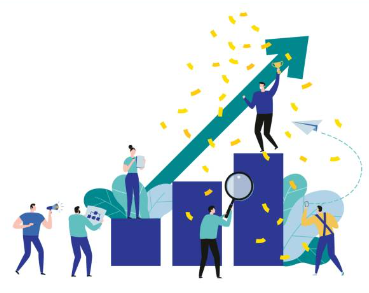How Motivation Affects Performance
The theories of motivation are divided into content and process theories. The two theories are often complementary. Both can be useful for managers, especially those who are in the process of building a team.

Selfpause Affirmation App
Download the app to get 1,000’s of affirmation meditations and everything you need to write, record and listen to your own.
The former focuses on the cognitive antecedents and relationships of motivational factors to behavior. The latter offers realistic guidance for managers looking to implement effective motivation techniques. The two theories are often complementary. Both can be useful for managers, especially those who are in the process of building a team.
Intrinsic interest motivation

Intrinsic interest motivation is a type of self-motivation that is driven by personal interest. The motivations for this type of behavior may be related to objects, subjects, or activities that have a personal or situational significance to the person. When intrinsic interest is strong, it can affect performance.
Intrinsic interest motivates us to perform better, especially if it aligns with our long-term goals. People with intrinsic motivation tend to spend more time doing activities that are meaningful to them and develop skills necessary for achieving their long-term goals. It is also a source of persistence, which keeps people engaged in work even when they aren’t receiving any external rewards. For example, a customer service representative who enjoys solving problems is likely to work longer to resolve a client’s concerns.
In addition, intrinsic interest motivates individuals to participate in activities that they otherwise wouldn’t do. These activities are engaging, challenging, and enjoyable, even if there is no external reward. The motivations behind intrinsic motivation are often connected to the pleasures of the activity, as opposed to the risks of the activity.
Research on intrinsic motivation has been ongoing for decades. Initially, experiments looked at the effects of extrinsic rewards on intrinsic motivation. Results from these studies have shown that people who do interesting activities in order to receive monetary rewards are less intrinsically motivated compared to their non-rewarded counterparts. This study was controversial, but further tests were conducted in subsequent decades. As a result, the results are now more clear.
Personal development motivation

A person’s motivation may be affected by the way they feel about themselves. Low self-esteem can lead to poor moods, an inability to meet goals and challenges, and relationship issues. On the other hand, overinflated self-esteem can keep a person from learning from their experiences. A good manager understands the need to manage employee self-worth, using the resources of the organization to achieve a balance between extrinsic and intrinsic motivation. However, it can take time and money to develop the training that is needed to make the most of the process.
Personal development encourages employees to discover and build on their strengths and abilities. It also encourages them to work more effectively in a team environment and develop their confidence levels. The result is an improved work environment and happier clients. This in turn, results in better productivity and effectiveness. Personal development is a great way to improve the quality of your life and your performance at work.
The two types of motivation affect performance differently. The first is based on the desire to achieve. The other is based on the desire to avoid failure. While avoidance motivation is detrimental in excess, approach motivation is essential for long-term mastery goals. A healthy balance between approach and avoidance motivation leads to a successful person.
Job content
The motivational level of employees is an important aspect of job performance. People with high motivation levels are more likely to remain motivated in their jobs. The right level of motivation can lead to higher productivity and greater persistence. The level of motivation depends on several factors, including the person’s prosocial behavior and the perception of the manager’s credibility.
Job satisfaction

Motivation is an important factor in job satisfaction. Employees who are highly motivated are not content with their current situation, but also want to contribute to the company’s development. However, because they don’t believe that their full potential is being used, they will have a higher turnover rate. Therefore, employees with high intrinsic motivation are likely to leave their jobs sooner than those with low intrinsic motivation.
Employees’ job satisfaction is also an important variable to study, because it is one of the factors that mediate the relationship between job performance and motivation. For example, if a teacher feels good about his or her work, he or she is more likely to do a good job. Similarly, a teacher who is satisfied with his or her work is more likely to follow school rules and perform better.
Job satisfaction is also related to the perceived usefulness of the job. However, this relationship varies depending on the sector and welfare state regime. Despite these limitations, the evidence shows that pro-social motivation is positively related to employee job satisfaction. In addition, pro-social motivation is related to job satisfaction in a wider institutional context. This study has implications for the recruitment of highly motivated employees and retaining highly satisfied ones.
There are many factors that influence motivation, including personality, environment, and age. Research by Kozlowski and Bell suggests that motivation varies from person to person, and that it varies with age. For example, people may be motivated by the money they earn or the recognition they receive for their performance. On the other hand, employees may feel less satisfied if their job is not satisfying, and this may be the reason for their dissatisfaction.
Organizational culture

Organizational culture is a set of values and beliefs that define an organization. It affects employee behavior, internal integration, and coordination. It can inspire innovative behavior and make members of an organization feel a sense of commitment to it. It is important to recognize the various cultural elements that can impact employee performance, and recognize how you can influence them.
A good organizational culture is important to the growth and development of a company. The employees, company management, and stakeholders all contribute to a positive company culture. When there is a positive culture, the company can expect rapid growth. Several studies have shown that a company’s culture can affect employee performance. One study even found that a company’s culture affects the motivation of employees.
Companies that develop a positive company culture have an easier time retaining their best workers. Negative work environments lead people to leave, even those who are great at their jobs. Organizational culture helps to build a high performance environment, which in turn leads to higher employee satisfaction. In addition to being more likely to retain good employees, organizations with a positive culture attract the best talent.
Another factor to consider is the way in which people communicate. This is important because communication between hierarchies and within departments is essential. For example, shared workspaces encourage banter and create cohesion among the staff. Human resources should also pass on culture information to potential hires, and induction should also provide clues about the way of life in the organization.
Organizational culture affects the performance of a firm, and can either foster or hinder innovation. Firms with a strong adhocracy culture are more likely to generate innovative ideas than those with a rigid corporate culture.
Our Top FAQ's
Motivation is a key factor that can impact an individual’s performance in the workplace. When a person is highly motivated, they are more likely to be engaged in their work, which can lead to higher levels of productivity, creativity, and overall job satisfaction. On the other hand, a lack of motivation can lead to decreased performance, as well as feelings of frustration, boredom, and apathy.
There are several strategies that can help to maintain high levels of motivation and improve performance: setting clear goals and objectives, providing positive feedback and recognition, offering opportunities for growth and development, fostering a positive and supportive work environment, and aligning work tasks with an individual’s strengths and interests.
Intrinsic motivation refers to motivation that comes from within an individual, such as the desire to learn, grow, or achieve personal goals. Extrinsic motivation, on the other hand, refers to motivation that comes from external factors, such as rewards, praise, or external pressure. Research has shown that intrinsic motivation is generally more effective in promoting long-term performance and well-being, while extrinsic motivation can be more effective in the short-term. However, it is important to note that both types of motivation can play a role in influencing performance.
While high levels of motivation can be beneficial for performance, it is possible for an individual to become too motivated. This can lead to an unhealthy focus on a particular goal or task, resulting in increased stress and burnout. To avoid this, it is important for individuals to maintain a healthy balance and focus on self-care, such as taking breaks, setting boundaries, and engaging in activities that promote relaxation and well-being.
There are several ways to assess an individual’s level of motivation: by observing their behavior and performance, by asking for feedback from colleagues or supervisors, or by administering self-report measures, such as motivation surveys or questionnaires. To improve motivation, it may be helpful to identify any potential barriers or challenges that may be hindering performance, and work to address these issues. Additionally, implementing strategies such as those mentioned in question 2 (setting clear goals, providing positive feedback, etc.) can help to improve and maintain motivation.
